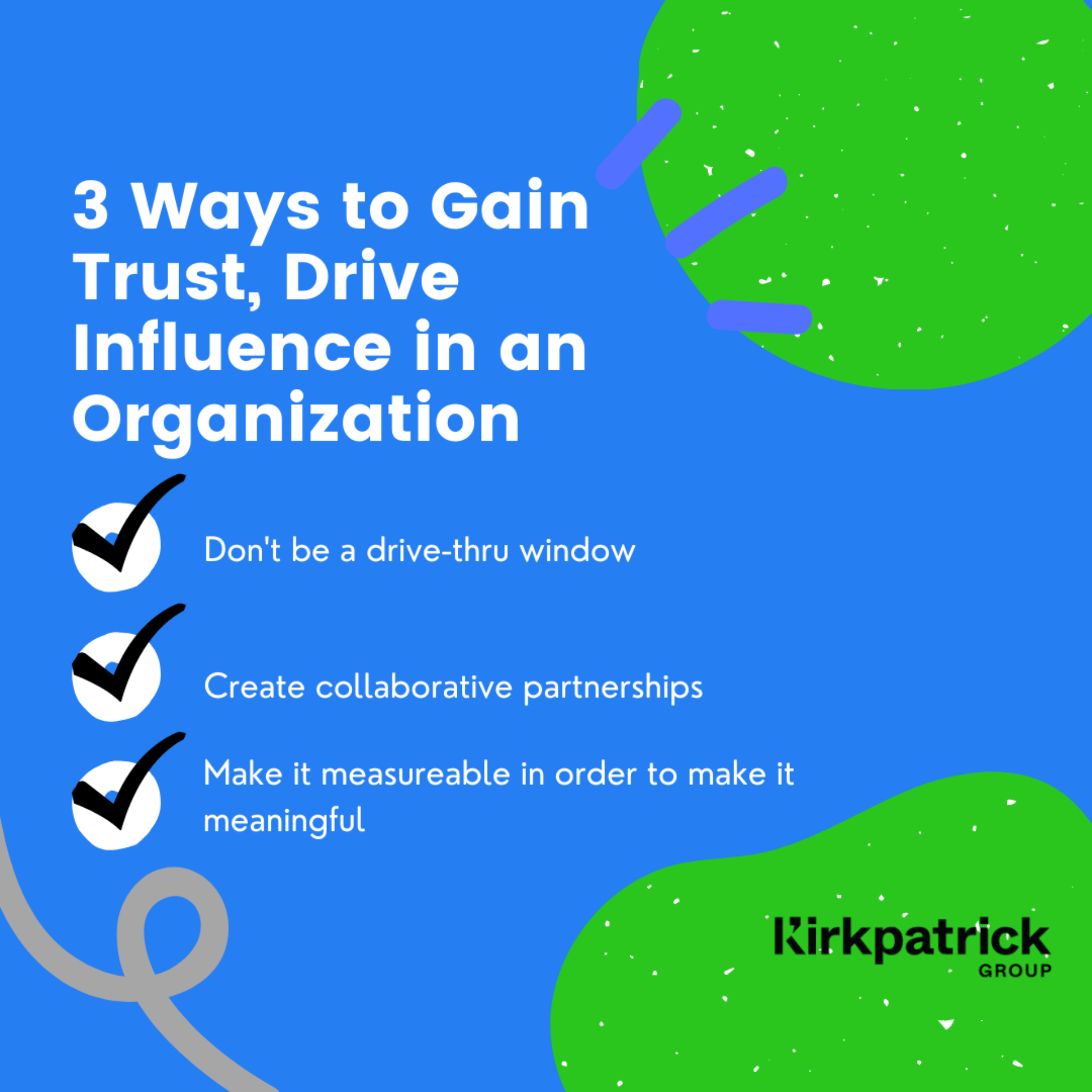Team Spotlight: Meet Suzanne
Suzanne Basista is a seasoned marketing and communications professional with years of experience on both the agency and client sides. She has worked across a…
Read More
It’s no secret that communications teams are in the business of client service. It doesn’t matter if you’re on the agency, non-profit, or corporate side, communicators wear many hats, and the ability to influence stakeholders at varying levels within an organization is a crucial skill that takes years to refine.
This can be, arguably, one of the most difficult and intangible parts of the job. Quantifying an earned media campaign? Cake. Building meaningful stakeholder relationships? It can take years.
I’ve worked in corporate and crisis communications for over a decade at various corporations and in partnership with agencies, which all led me to founding the Kirkpatrick Group. Here are my top recommendations for building trust and driving influence with your clients:
1. Don’t be a drive-thru window
One of my mentors always told me, “Don’t be a drive-thru window.” In other words, our clients don’t always know exactly what they want, so when they request something, we need to engage in a meaningful discussion and ask smart questions. For example, if your client says “we need a press release on this product launch,” and you always say “yes, ok,” you’re positioning yourself as a task master and not a strategic partner. Communicators that push back against the “drive-up” model would say something like, “Let’s talk about your objective for this launch — what types of end users do you want to reach? Where is the product available? What does your budget look like? What does success look like to you?” Then, you’d develop a strategic communications plan. Yes, it may include a press release, but insightful communications teams know that impact can be made well beyond a wire distribution. This helps build your team’s credibility and become a valued partner that deserves a seat at the table.
2. Create collaborative partnerships
In communications, collaboration is non-negotiable. It’s important to have a pulse on your stakeholders’ needs and collaborate with them to get to the collective end goal. Creative idea not jiving with them? Ask them questions to understand their perspective and where the initial proposal fell short. Working style not what they expected? Find a way to meet in the middle so both of your needs are met without sacrificing productivity. Oftentimes, it can be as simple as having a conversation to understand the individual or teams’ point of view and adjusting accordingly.
3. Make it measurable in order to make it meaningful
I’ve found it’s best to level set with internal clients at the onset of a campaign on the objective and key performance indicators. It keeps teams accountable and allows communicators to determine upfront what results they feel are achievable. Be sure to work together with your functional partners on these goals, ensuring they are KPIs that you both feel comfortable with. And, be sure to report out on the results at the end of the campaign. If you missed the mark on any, own it, and be sure to explain why and what could be adjusted in the future. Transparency is key in order to build trust.
Stakeholder relationships can be complex to navigate as a communicator, but with the right strategic tools (and a little bit of charm), you and your teams can gain trust, build relationships and positively influence an organization and outcomes.
By: Katie Regan

Suzanne Basista is a seasoned marketing and communications professional with years of experience on both the agency and client sides. She has worked across a…
Read MoreCara Wetzel has worked in the marketing and advertising industry for over 20 years. Her background includes studies in communication, creative writing, and design. She…
Read MoreAdrienne Livingston has 15 years of experience managing public relations and social media efforts for a wide range of companies. Now located in the Washington,…
Read MoreA business unit of a coatings and materials company wanted to position itself as an industry leader and increase visibility for its products, technologies and…
Read More